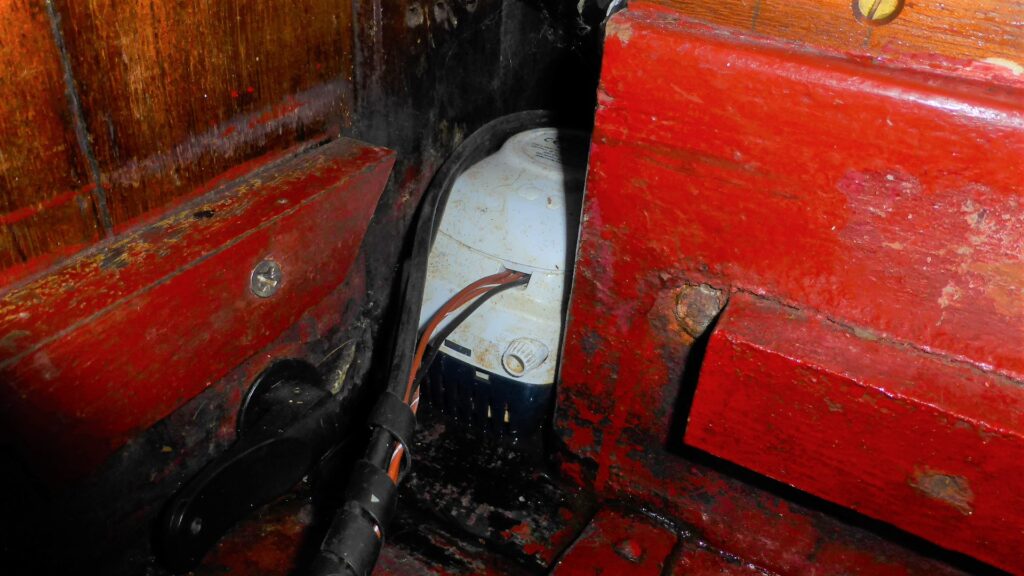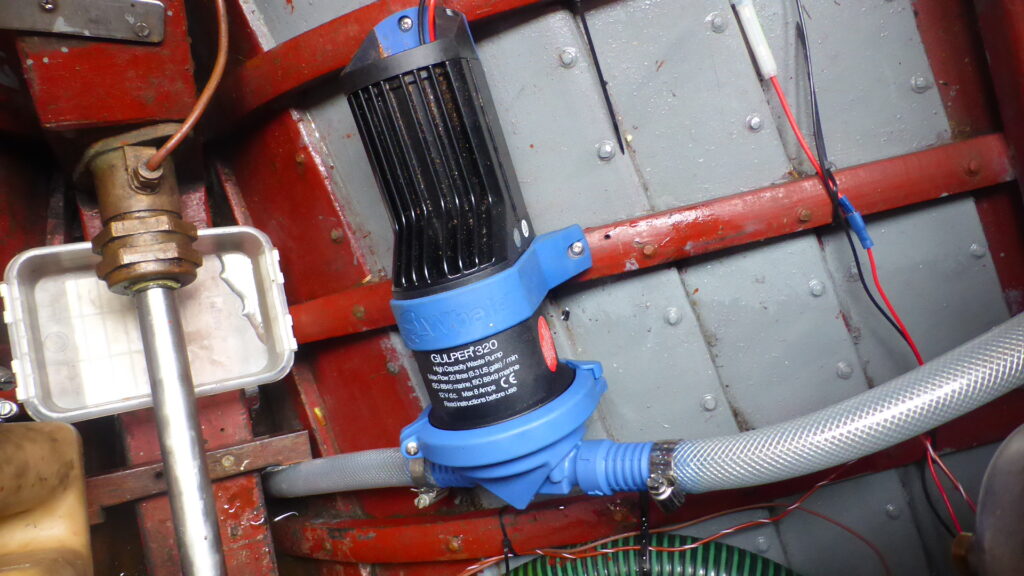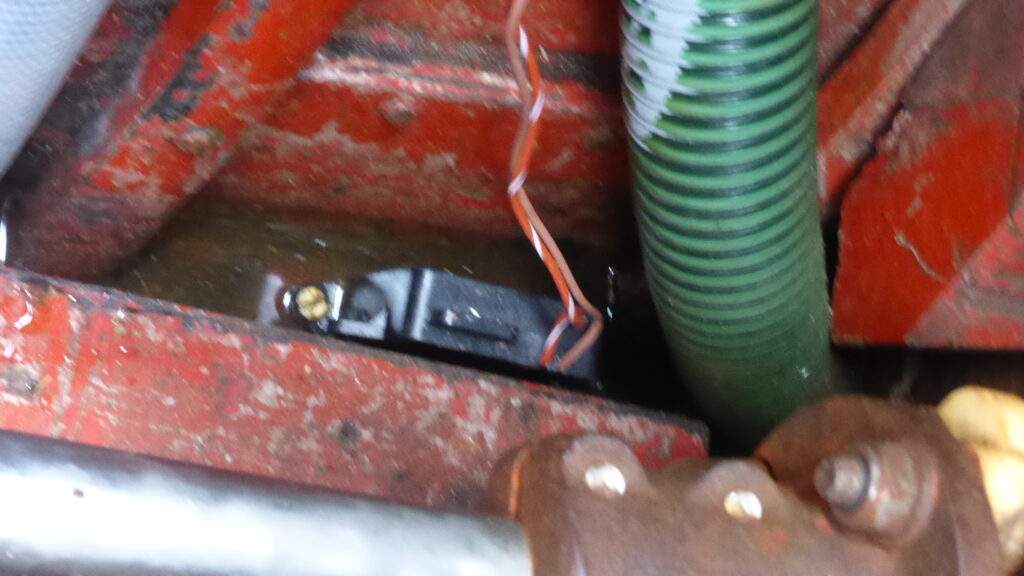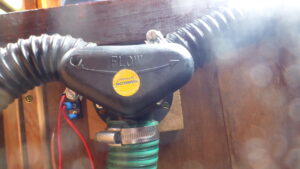Bilge pumps: what do you need and where should they be placed?

The usual position for an impeller pump, behind the keel case
The most common place for an automatic electric pump is in the small gap behind the keel case, in front of the T&G bulkhead that divides the accommodation from the engine. A standard 500gph or 750gph pump will fit there, with a 19mm (¾”) pipe leading away under the aft dinette seat and away to an exhaust fitting on the hull. This type of pump moves a lot of water for its size, but uses a small impeller which can be easily blocked by hard debris (a shard from the latest wine glass casualty will do nicely).
They can also fall victim to an airlock in the outlet pipe, which can occur if the pipe does not rise continuously to the hull fitting. If the water around the pump dries out, the next time the water level rises and turns the pump on it can find itself with air in both the intake and the outlet of the impeller- and no water is moved. This is the problem with a pump which is not ‘self-priming’.
An automatic pump can respond to an unexpected increase in the level of bilge water. But what if the pump suffers an unexpected failure when you’re not on board (see above)? Or what if the quantity of water ingress exceeds the pump’s capacity? For both of these reasons, it makes sense to have not one automatic pump, but two.

Whale Gulper 320 diaphragm pump, with rotatable head, scavenging from beside the deadwood
A diaphragm pump is a realistic option for a second pump, mounted in the engine compartment and drawing from the lowest part of the boat. Diaphragm pumps are self-priming and are less likely to be disabled by small bits of rubbish. There are three drawbacks. The first is that it is very difficult to mount a remote water level sensor where it can be easily accessed to check its operation. The only candidate that I have found is the

Whale BE9003 sensor, deep beside the deadwood, next to the manual pump intake. The prop shaft is visible at the bottom of the picture
Whale BE9003 solid state switch (there is a different version with a delayed start). The second drawback is that they are expensive. The third is that their capacity is lower: I have the Whale 320 which draws 240gph. On the plus side, a diaphragm pump doesn’t care if it runs dry, so you can run them manually to scavenge as much water as possible.
Years ago we had pretty oily water under the engine and this ran into the bilges throughout the saloon when the boat was going through a moderate swell. To keep the mucky stuff in its place, I blocked the

Removable bung in the bulkhead
limber holes between the engine and the saloon (and drilled some higher up as a precaution). Now the two areas are serviced by their own bilge pumps.

Diverter valve allows draw from the engine compartment or beneath the aft seating
However, there is a removable bung so that the two pumps can support each other when the hull is taking up after the winter storage. In addition, the manual diaphragm pump (which has a much higher capacity than either automatic) can be diverted to work in either the saloon or the engine compartment by using a water diverter valve.


